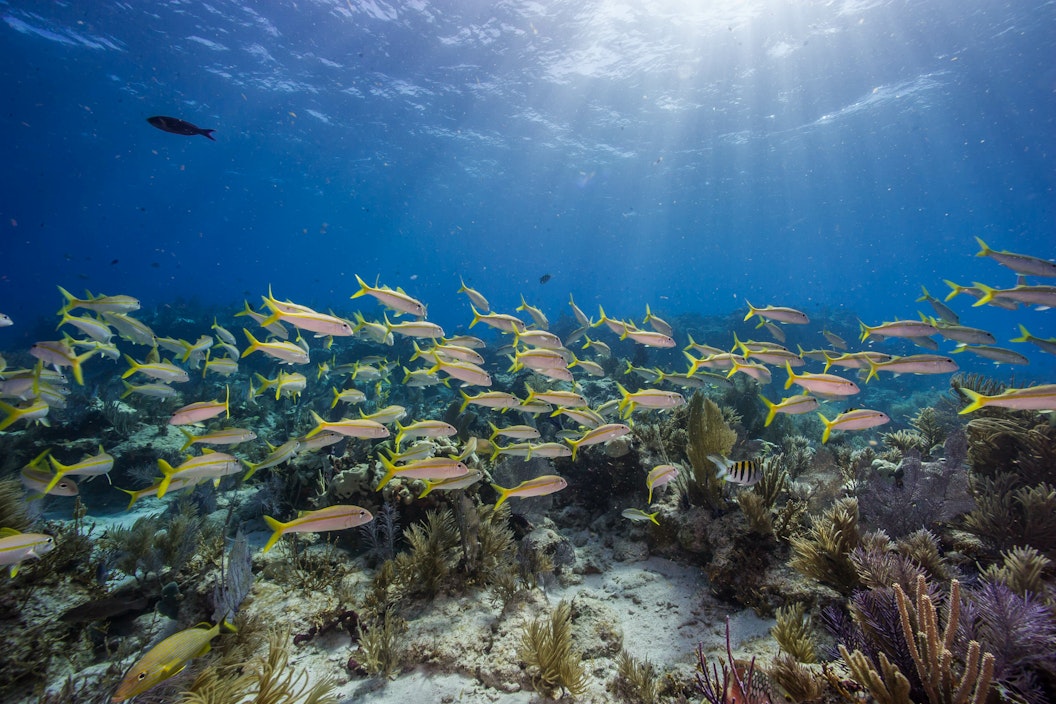
Park rangers, scientists, and divers are working to protect coral reefs in South Florida.
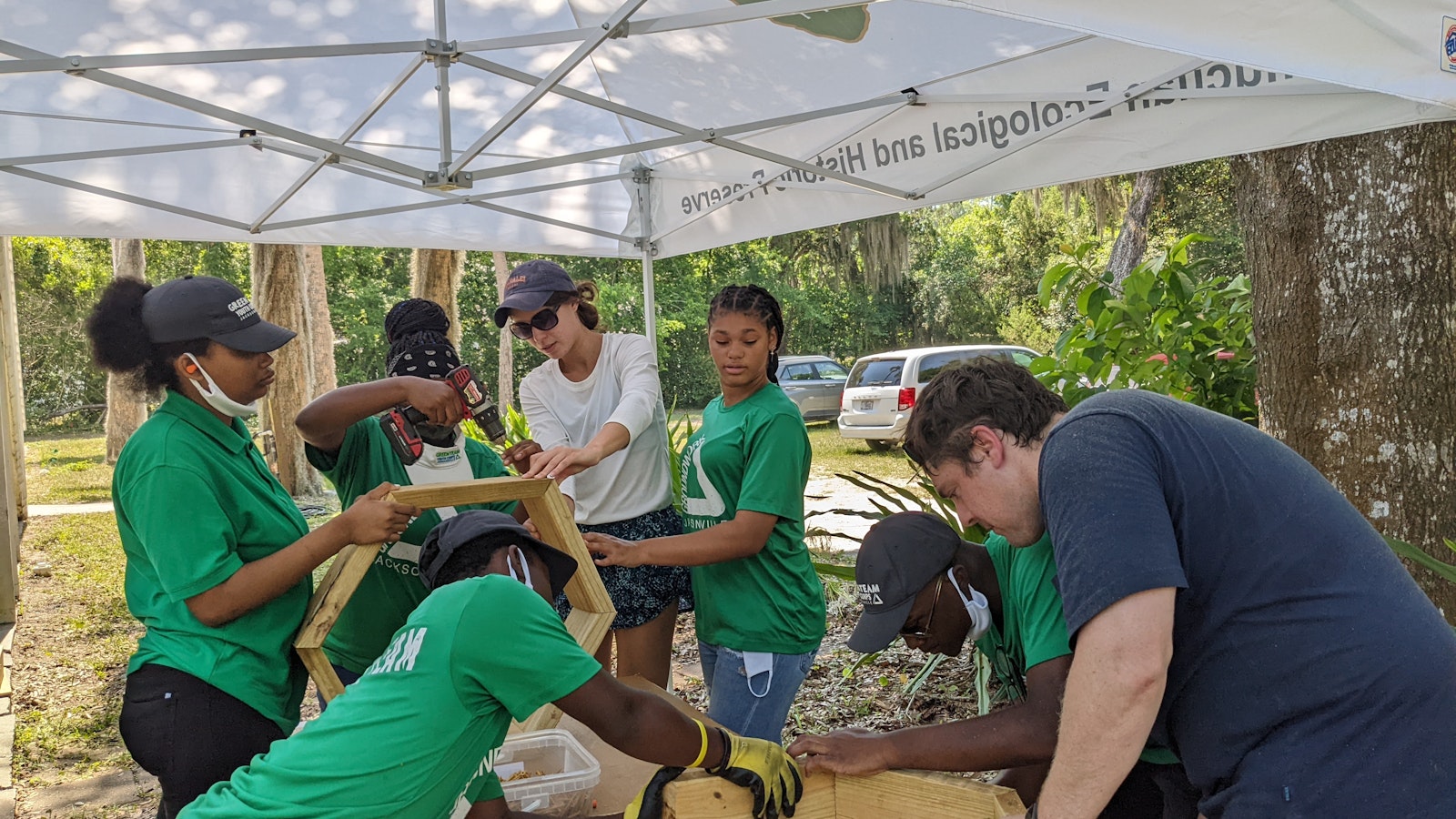
Just 20 minutes from Jacksonville, Florida lies Timucuan Ecological and Historic Preserve, one of the last unspoiled coastal wetlands on the Atlantic Coast.
The park includes important archaeological sites, preserves 6,000 years of human history, includes Fort Caroline and Kingsley Plantation, and protects the land’s wildlife, marshes, and coastal dunes.

But with a rise in park visitation and increasingly strong storms at Timucuan Ecological and Historic Preserve, the park’s shorelines are becoming progressively more fragile. At Timucuan Ecological and Historic Preserve, a major factor impacting shoreline vitality is the boat wake from recreational boat use along the national park shores.
“It’s the wave energy. A boat goes down the middle of the river and it throws up a wake behind it and those go out to the bank,” explained Steven Kidd, Chief of Science and Resource Management at Timucuan Ecological and Historic Preserve.
With each wake, a little bit of sand is taken away, loosening vegetation and destroying fish habitats in the process. And as the vegetation dies and the shoreline is left with open sand, there’s nothing left for oysters to cling onto and help rebuild. The ripple effect of the disturbances go well beyond the shoreline itself, impacting the shoreline vegetation, oysters, and fish, as well as the birds and sharks that prey on the oysters and fish.

In a healthy shoreline ecosystem, the same disturbance happens during storms. But historically severe storms have been rare enough that the habitat has time to repair itself. With enough boat energy creating destructive wakes and damaging storms, eventually, all that is left of the shoreline is an open mud flat or sandbar. And today, that’s increasingly the case along Timucuan Ecological and Historic Preserve’s coastline.
Restoring the shorelines is a critical investment not only in the wildlife and plants that call these wetlands home but will also ensure that the shoreline is resilient in the face of rising sea levels and climate change.
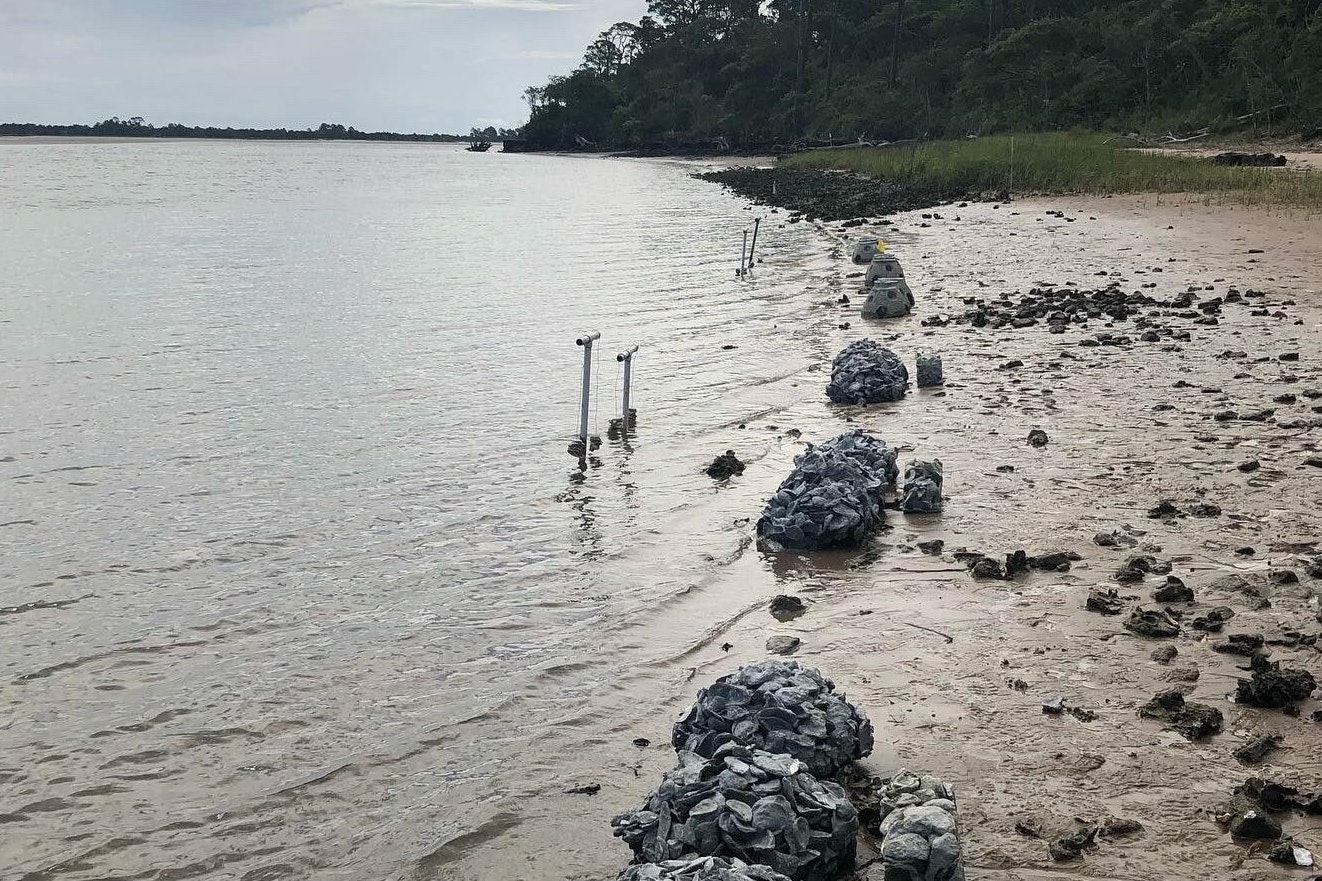
The beginning of the ecosystem restoration project begins with one of the physically smallest players – the oyster. A crucial pin in Timucuan’s ecosystem, oysters provide water filtration services increasing water quality and provide food for native wildlife, and the oyster reefs provide protection for fish.
“We were thinking, how do we help get oysters to recolonize this area?” says Kidd.
Shorelines devastated by tidal energy from boats and severe storms leave a decimated shoreline without the vegetation or water conditions necessary for the oysters to reproduce.
The park biologists knew that other parks and shoreline restoration efforts have used reef balls, concrete structures that are moored in the shallow area of the water to provide an anchor for oysters to latch onto as they grow and reproduce. The reef balls are meant to mimic a functional ecosystem where oysters build on top of old oyster beds and expand from there.
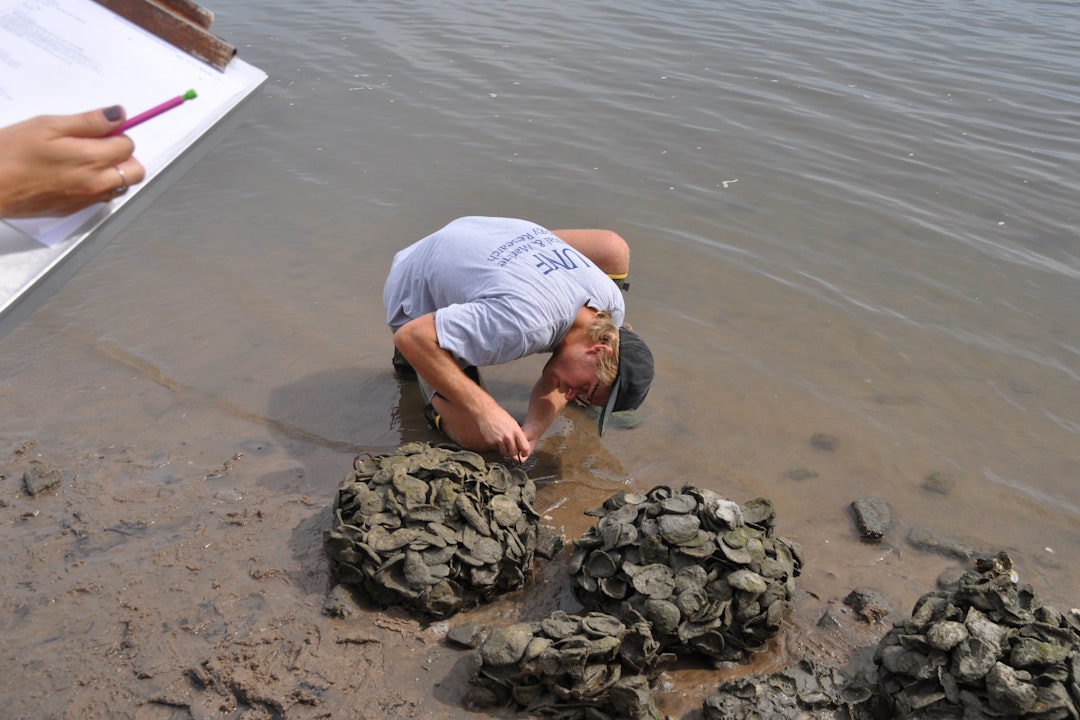
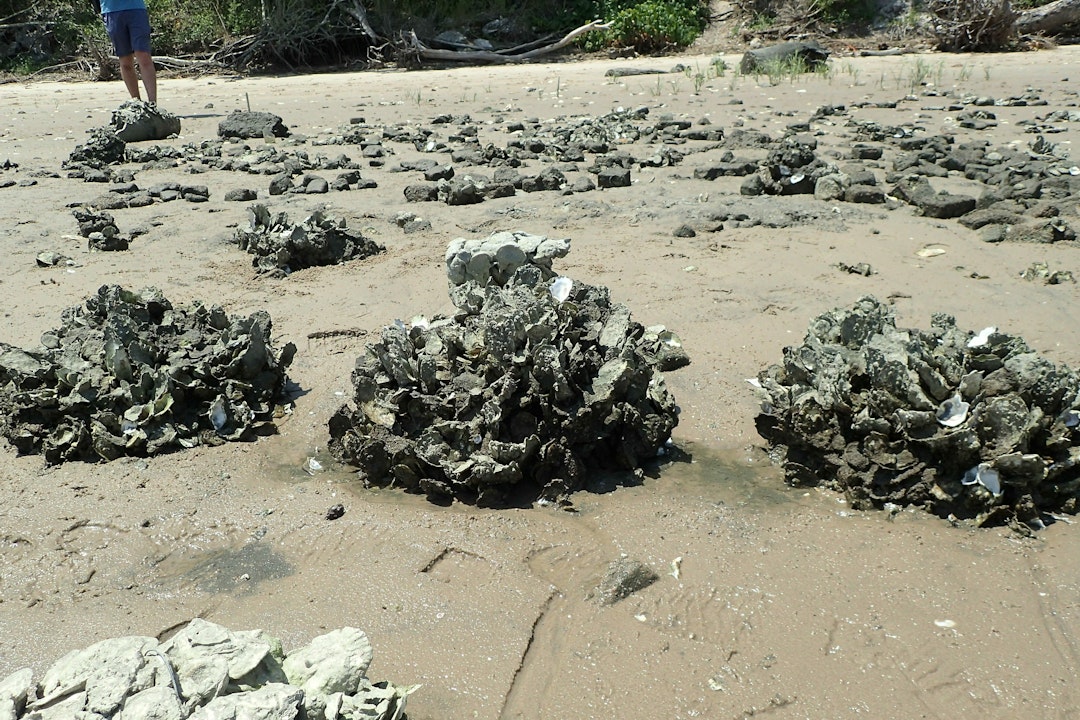
But cement manufacturing has a high carbon footprint, and the park wondered if there was a better way to attract the oysters. When a team at the University of North Florida already working on a carbon friendly, sustainable innovation for shoreline restoration reached out to test their innovation at Timucuan Ecological and Historic Preserve, it was a perfect match.
Their innovation: Pervious Oyster Shell Habitat (POSH) modules. POSH modules are similar to reef balls, providing oysters a new place to hold onto in the decimated shoreline. But unlike the cement balls, the POSH Modules are made almost entirely of recycled oyster shells.

Kelly Smith, Associate Professor of Biology, and her graduate student, Hunter Mathews, worked with the materials science department at the University of North Florida to develop the design and configuration of the POSH modules. Today, they lead the day-to-day administration of the project and are closely monitoring the POSH modules’ ecological impacts.
“From an environmental perspective this is a really good idea because much of the oyster shells that we get from restaurants would otherwise end up in the landfill," says Smith.
Bypassing the carbon emissions associated with creating concrete reef balls, the POSH Modules use oyster shells leftover from restaurants to create a natural surface, with just the smallest amount of cement to act as a binder.
As the team prepared to deploy the modules at Timucuan Ecological and Historic Preserve, Robert Richardson, Assistant Director of Research Technology Services, and Chris Baynard, Associate Professor of Economics and Geography, also joined the team – providing photography and GIS mapping of the sites to monitor progress.
This new model not only cuts down on manufacturing emissions, but because they are hollow, the balls also provide a natural habitat for fish. And the POSH modules and a growing oyster population will protect the growth of Spartina alterniflora, a saltwater tall grass, from tidal energy.

Working together, both the POSH modules and the Spartina will restore the habitat of three Species of Greatest Conservation Need (SPCN): Scalloped hammerheads, Sandbar sharks, and American oystercatcher.
Above the water, birds like the American oystercatcher rely on this area for foraging oysters. And under the water, the habitat restoration is critical for species like the sharks that use the rivers as a nursery for their pups and juveniles. By restoring the natural ecosystem, the sharks will once again have ample space and resources to feed and rear their pups.
Once the POSH module design was complete, the UNF team and the National Park Service looked for another set of vital partners— the community. “We've got to get the public involved, and so I've worked very hard communicating with [them],” says Smith. She found her first partners in an unexpected spot—a group of Jacksonville teenagers.
The teens are part of Groundwork Jacksonville’s Green Team Youth Corps, a year-round program for students from Jacksonville’s urban core to learn about and lead local environmental and healthy community initiatives. The teens come from communities that have been historically excluded from accessing the outdoors and parks.
Groundwork Jacksonville is one of 21 Groundwork USA Trusts, many of which collaborate with national parks across the country. The goal is to educate, inspire, and provide skills to the next generation of environmentally engaged leaders by creating a connection between their neighborhoods and the wild.
Groundwork Jacksonville has worked with Timucuan Ecological and Historic Preserve for years. Previous teams completed "The 400 Project – Honoring the Enslaved Voices of Kingsley Plantation," where they wrote and produced a visual radio show telling the stories of people who had been enslaved at Kingsley Plantation at Timucuan Ecological and Historic Preserve. They also restored the unique historic tabby slave cabins, which are made of a comparable oyster shell concrete like material used in the POSH units.
But for most of the Jacksonville youth in this cohort, this is their first time working on a restoration project. “They're learning practical skills as they do this, and they can talk up the project with others who may never even have seen the sites,” says Smith.
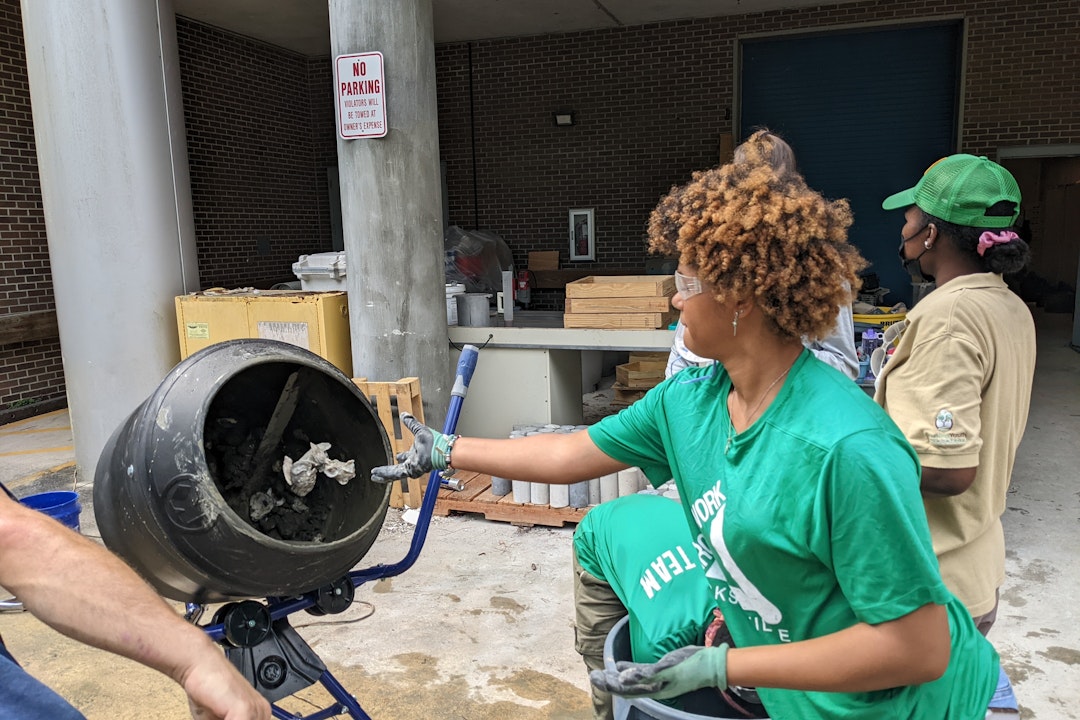
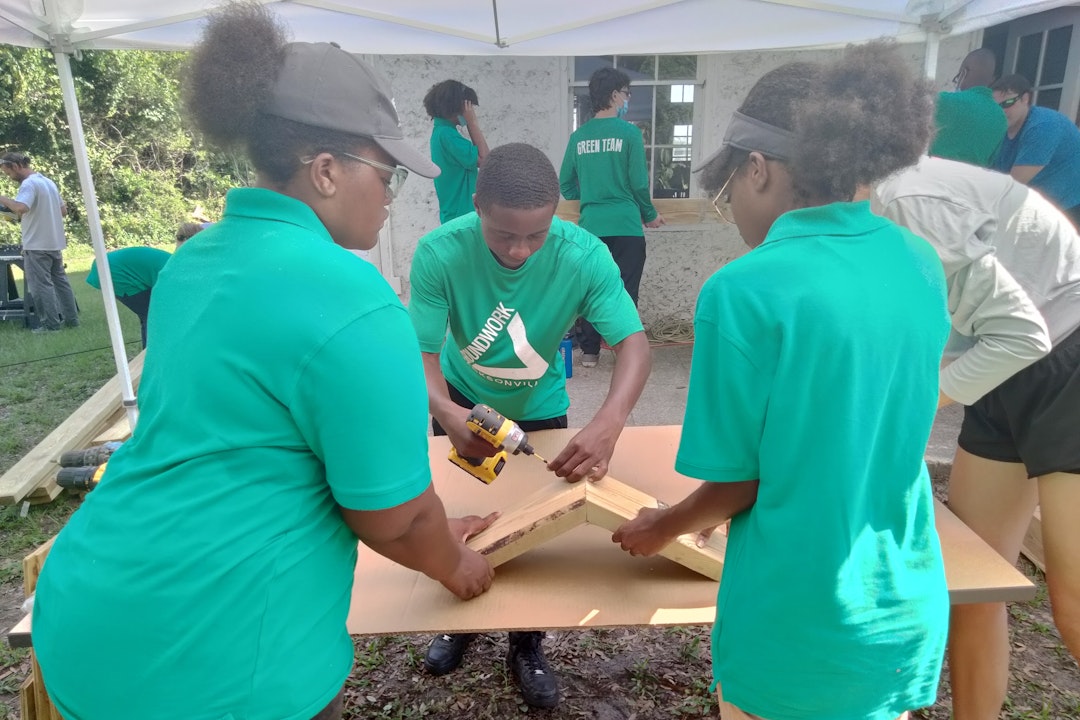
Working with Smith, University of North Florida, and the National Park Service, the teens helped build the POSH modules throughout the summer. Over the course of four sessions, the National Park Service prepared a certain stage of the project for the Green Team—from sorting shells to assembling the structures.
The team also toured University of North Florida and while on campus, poured and created 25 POSH modules themselves. And for the final session, the Green Team joined the university team, the National Park Service, the National Park Foundation, corporate funder Stericycle, and others on the shores of Timucuan Ecological and Historic Preserve to deploy the structures.
It's a starting point for the teens to explore all these different skills that they've learned and interests around marine biology or engineering or conservation, Psychas says.
The Green Team loved the project because they learned tangible skills like carpentry, Psychas added. And there was an intangible too—they were trusted.
“They got to build something really important and be trusted with that. As youth, the fact that they could actually construct these was really critical,” said Psychas.
For Smith and the University of North Florida team, the Green Team volunteers epitomize her goal for the POSH modules: making shoreline restoration a community effort, affordable, and accessible.
Inside or outside the park, visitors can make an impact by using their own boats responsibly, not over harvesting oysters, avoiding polluting the water, and donating oyster shells to recycling programs.
And eventually, Smith hopes that creating the POSH modules on both public and private land will be a viable option as well. Long-term, she hopes to distribute both the modules themselves as well as construction plans for parks, community organizations, and volunteers to make their own POSH modules.

Smith’s vision to tackle restoration needs alongside partners at a larger scale is one part of a nationwide effort to restore degraded wetlands throughout the national park system.

Since the 1700s, over half of the wetlands in the lower 48 states have been destroyed. And today, an estimated two million acres of NPS-managed wetlands in the conterminous U.S. are considered degraded – dire news for the third of threatened or endangered plants and wildlife that depend on wetlands for survival.
Many migratory bird species use wetlands for wintering or breeding habitat, and freshwater fish and shellfish rely on these essential waters for food, cover, spawning, and nursery grounds. Wetlands also act as a filter for pollutants, cleansing groundwater and recharging aquifers. And they act as a carbon sink, efficiently absorbing carbon dioxide from the atmosphere and keeping large stores of carbon in the soils for long periods of time.

NPS is currently completing a degraded wetlands inventory, mapping out all degraded national park wetlands into geo-spatial databases and identifying restoration needs, costs, and related information.
And the National Park Foundation is supporting wetland restoration efforts across the park system by converting land back to wetlands, restoring wetland areas to their original hydrology, removing invasive species, and stabilizing eroding shorelines such as those at Timucuan Ecological and Historic Preserve.
Back at Timucuan Ecological and Historic Preserve, Kidd credits the success to the level of collaboration across partners. While the park coordinated the project, the University of North Florida provided the ecological and technological know-how, Groundwork Jacksonville’s Green Team brought volunteer power, and the National Park Foundation worked with Stericycle to help fund the project.
The Timucuan restoration project is just the first for Stericycle, a provider of regulated medical waste management and secure information destruction. The Timucuan Ecological and Historic Preserve project is the first location for Stericycle’s five-year, $1 million partnership with the National Park Foundation, supporting wetland restoration projects.
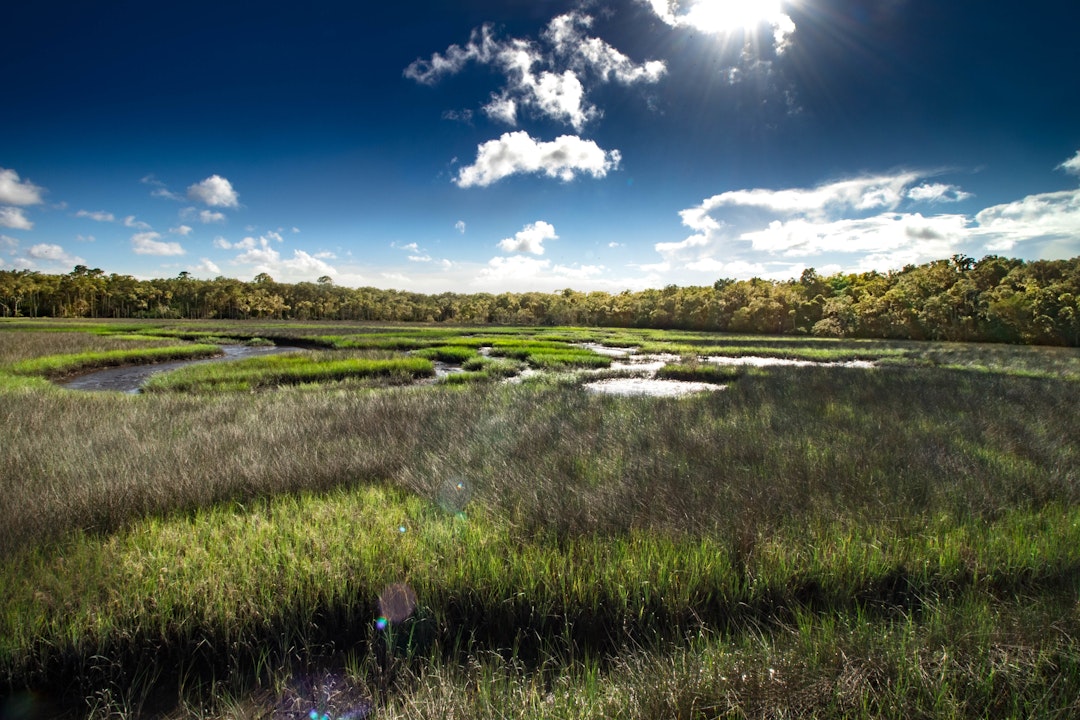
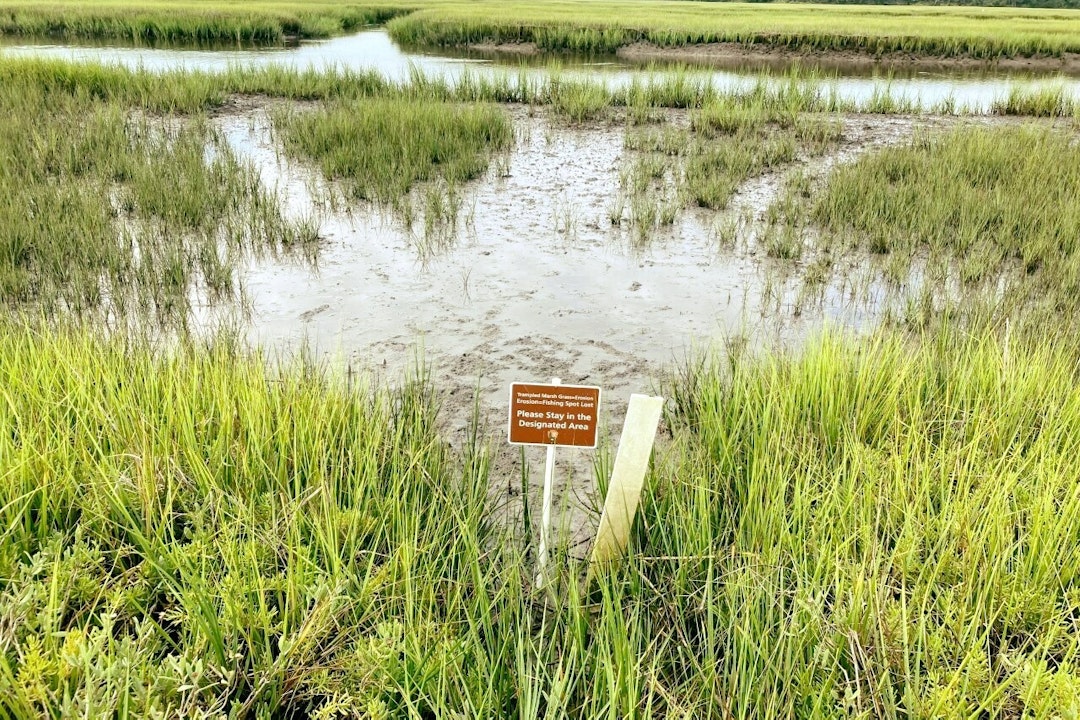
While Stericycle’s support will bolster additional projects in the future, the collaboration is already paying off at Timucuan Ecological and Historic Preserve.
The POSH modules were just added in August and it’s still early to measure long-term impact, but the University of North Florida team are monitoring the results and already seeing oysters attracted to the structures. They will continue monitoring the 100-meter restoration area, move structures or make tweaks as necessary, and continue to deploy additional POSH modules across additional depleted shorelines.
"This is a project that we have really high hopes for,” says Kidd. “We have every reason to believe it will work."
Generous funding from Landscape and Wildlife’s supporter Stericycle supported the wetlands restoration work at Timucuan Ecological and Historic Preserve.

Park rangers, scientists, and divers are working to protect coral reefs in South Florida.
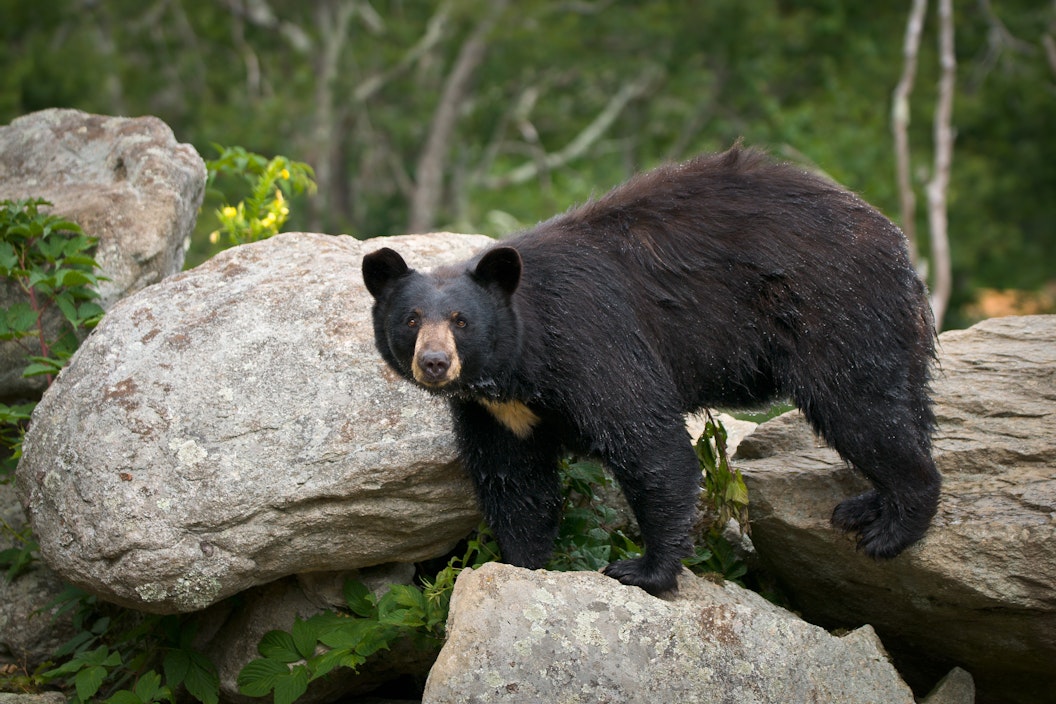
What happens when bears are relocated from parks? One bear traveled 1,000 miles back to her home in Great Smoky Mountains National Park.